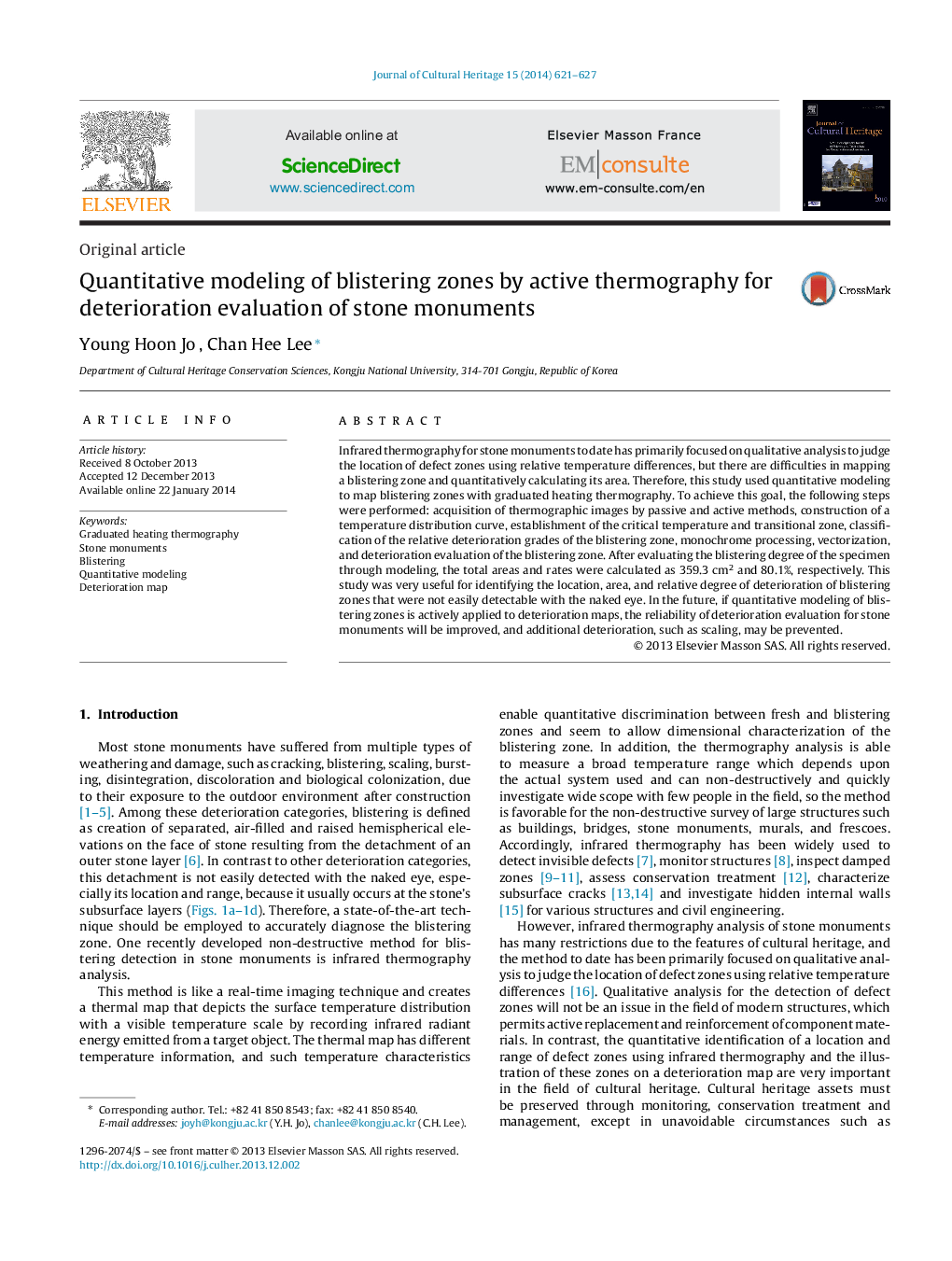| Article ID | Journal | Published Year | Pages | File Type |
|---|---|---|---|---|
| 1038012 | Journal of Cultural Heritage | 2014 | 7 Pages |
Infrared thermography for stone monuments to date has primarily focused on qualitative analysis to judge the location of defect zones using relative temperature differences, but there are difficulties in mapping a blistering zone and quantitatively calculating its area. Therefore, this study used quantitative modeling to map blistering zones with graduated heating thermography. To achieve this goal, the following steps were performed: acquisition of thermographic images by passive and active methods, construction of a temperature distribution curve, establishment of the critical temperature and transitional zone, classification of the relative deterioration grades of the blistering zone, monochrome processing, vectorization, and deterioration evaluation of the blistering zone. After evaluating the blistering degree of the specimen through modeling, the total areas and rates were calculated as 359.3 cm2 and 80.1%, respectively. This study was very useful for identifying the location, area, and relative degree of deterioration of blistering zones that were not easily detectable with the naked eye. In the future, if quantitative modeling of blistering zones is actively applied to deterioration maps, the reliability of deterioration evaluation for stone monuments will be improved, and additional deterioration, such as scaling, may be prevented.
